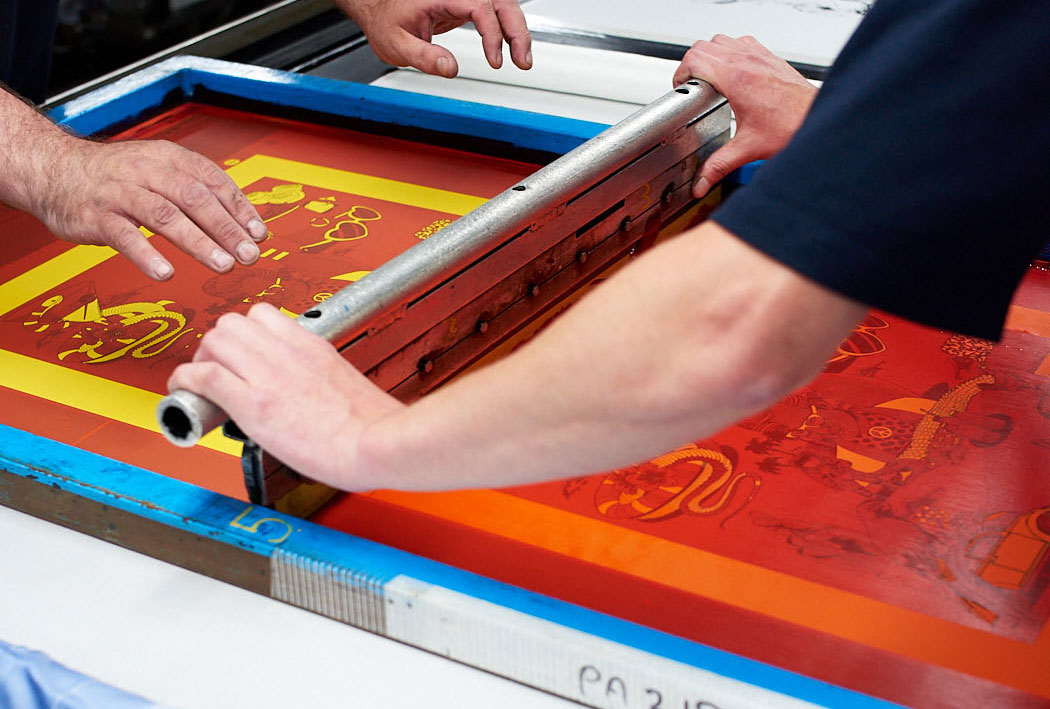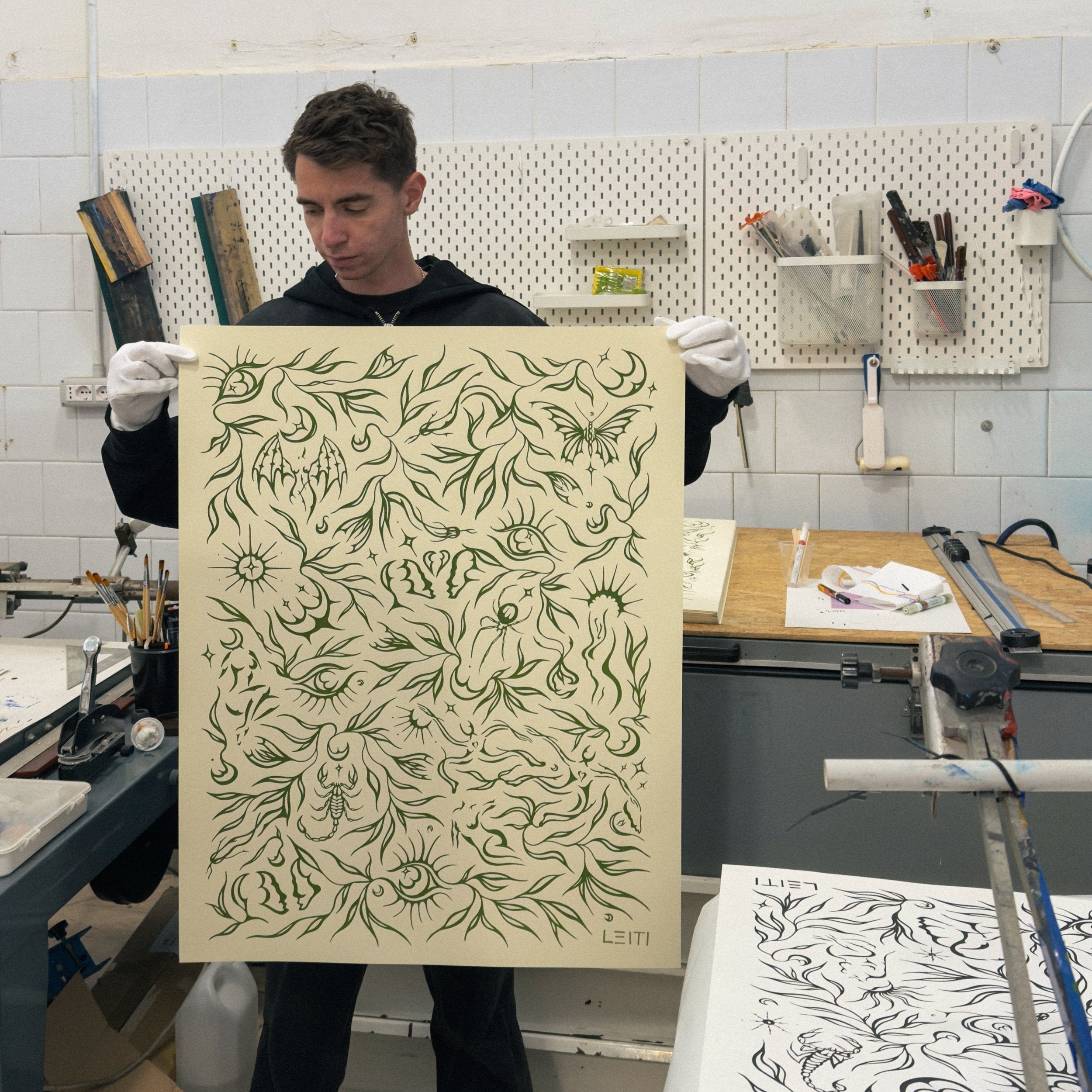
The Art of Screenprinting and Its Historical Evolution
Screenprinting, also known as silkscreen printing or serigraphy, is a versatile and dynamic printmaking technique that has been embraced by artists across the world. Its origins date back centuries, but it wasn’t until the 20th century that it gained widespread recognition as a respected medium in the art world. Today, screenprinting is celebrated for its ability to produce vivid, bold imagery with crisp lines and rich textures, often used for limited-edition prints. But how did this industrial technique become a key component of contemporary art?
What is Screenprinting?
Screenprinting is a process in which ink is pushed through a fine mesh screen onto a surface, typically paper, fabric, or canvas. A stencil is used to block off areas of the screen, allowing the ink to pass only through selected portions, thus creating an image. The technique allows for layering multiple colors and achieving striking contrasts and precision. It is this unique blend of mechanical repetition and handmade quality that has made screenprinting so appealing in the world of fine art.
The Early History of Screenprinting
While screenprinting in its modern form originated in the early 20th century, its roots can be traced back to ancient China (around 960 AD), where stencils were used to decorate textiles. This practice spread to Japan and other parts of Asia, where artisans refined the technique for various artistic purposes, particularly in textile design.
Screenprinting arrived in Europe in the 18th century, primarily for commercial uses such as advertising and product labeling. The breakthrough in modern screenprinting came in 1907 when Samuel Simon, an Englishman, patented a process that used silk screens and stencils, giving rise to the term “silkscreen”. The technique became widely popular for industrial applications, from posters to packaging, but its artistic potential had yet to be fully realized.
The Rise of Artistic Screenprinting
The turning point for screenprinting as an art form came during the 1930s, particularly in the United States. During the Great Depression, the U.S. government launched the Works Progress Administration (WPA) as part of the New Deal, a program that provided funding and support for artists. Many artists began to experiment with screenprinting due to its low cost and ability to create multiple copies of an image. This period saw the founding of the National Serigraph Society, which sought to promote screenprinting as a legitimate fine art technique, distinguishing it from its commercial uses.
Pop Art and the Explosion of Screenprinting in the 1960s
Screenprinting truly came into its own in the art world in the 1960s, with the rise of the Pop Art movement. Artists like Andy Warhol, Roy Lichtenstein, and Robert Rauschenberg embraced screenprinting for its ability to reproduce imagery with sharp precision and vibrant colors, often borrowing from commercial advertisements, comic strips, and mass media.
Andy Warhol is perhaps the most famous artist associated with screenprinting. His use of the technique to replicate images of consumer goods, celebrities, and symbols of American culture became a defining feature of his work. Warhol’s “Marilyn Monroe” (1962) and “Campbell’s Soup Cans” (1962) are iconic examples of how screenprinting allowed Warhol to explore the intersection of high and low art, repetition, and the commodification of culture.
Warhol’s use of screenprinting blurred the lines between art and mass production, aligning with Pop Art’s critique of consumerism and celebrity. His studio, known as The Factory, employed assistants to help mass-produce his screenprints, further challenging the traditional notions of individual artistic authorship.
Screenprinting in Contemporary Art
After the Pop Art movement, screenprinting became a widely accepted medium in fine art. Many artists continued to explore its potential for creating limited-edition prints. The tactile quality of a screenprint, with its layers of ink and bold colors, made it highly desirable for collectors.
In the 1980s and 1990s, screenprinting was embraced by street artists and graphic designers alike. Shepard Fairey, known for his “Obey Giant” series and the iconic “Hope” poster of Barack Obama, used screenprinting to create high-impact images that could be easily reproduced and distributed. Banksy, the anonymous street artist, also employed screenprinting techniques to create politically charged works that challenge social norms and critique authority.
Why Artists Choose Screenprinting
Screenprinting has remained popular among artists for several reasons:
1. Vivid Colors: The ability to apply thick layers of ink produces strikingly bold, opaque colors.
2. Layering and Precision: Artists can create intricate designs with multiple layers, achieving fine details and textures.
3. Reproducibility: Screenprinting allows artists to create limited-edition prints, making their work more accessible to a broader audience while still maintaining a sense of exclusivity.
4. Versatility: Screenprinting can be used on a variety of surfaces, from paper and fabric to wood and metal, giving artists endless possibilities for experimentation.
Conclusion
Screenprinting has traveled a long journey from its ancient roots to its current standing in contemporary art. What was once a purely commercial process has evolved into a respected fine art technique, thanks to pioneers like Warhol and Lichtenstein. Today, it remains a beloved medium for artists who want to explore bold colors, sharp imagery, and the possibilities of mass production, while still maintaining the personal, hand-crafted touch that makes each piece unique.
As the art world continues to evolve, screenprinting remains a vibrant and vital part of its history and its future.



